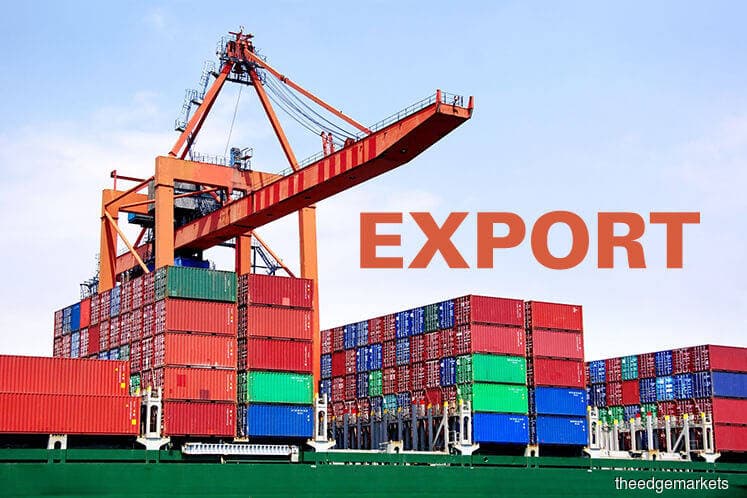
This article first appeared in The Edge Financial Daily on September 5, 2019
KUALA LUMPUR: Malaysia’s exports returned to positive territory in July, rising 1.7% from a year ago and rebounding from a dip in June, but economists warn the outlook remains challenging as US-China trade tensions continue to weigh on global growth and manufacturing.
The RM88 billion worth of exports beat analysts’ expectations and was achieved on higher sales of electrical and electronic (E&E) goods, liquefied natural gas (LNG), refined petroleum products, natural rubber, and timber-based items, the Department of Statistics said yesterday.
Earlier, Bloomberg and Reuters had forecast a 2.5% decline in July following a 3.1% year-on-year (y-o-y) drop in exports in June as shipments to key markets tumbled and demand for manufactured goods weakened.
RHB Research Institute economist Vincent Loo Yeong Hong attributed July’s export growth — slightly higher than his projected 1.4% expansion — to E&E recovery and expansion y-o-y of 4.5%, as well as non-E&E growth of 2.8%.
UOB Malaysia senior economist Julia Goh said Malaysia had benefitted from the trade diversion stemming from the US-China trade tensions, amid higher exports of E&E and a pick-up in exports to both countries.
But she cautioned the outlook remains challenging in the second half of 2019 (2H19) as rising US-China tensions are exacting a significant toll on global business confidence and manufacturing.
Globally, the Purchasing Managers’ Index (PMI) contracted for the fourth consecutive month in August (49.5), with the US PMI also below the 50 threshold to 49.1 — the first time in three years.
Malaysia’s manufacturing PMI was even weaker, slipping to 47.4 in August from 47.6 in the preceding month amid tough demand conditions and rising cost pressures.
“While Malaysia is expected to benefit from the trade diversion, slowing global demand and high base effects in 2H18 as a result of front-loading purchases ahead of the US tariff hike in Jan 2019 may offset any substantial gains in Malaysian exports,” Goh said. “Given downside risks and high base effects from a year ago for Malaysia’s exports, we maintain our 2019 full-year export growth forecast at 1% to 1.5%.”
MIDF Research, which has revised its exports’ forecast growth to 1.7% this year from 3.6%, does not see a huge comeback in 2H19. In 1H19, exports registered a 0.2% y-o-y decline amid faltering global trade due to rising protectionism and loss of momentum in major economies, especially in Europe.
“Looking ahead to 3Q19 (third quarter of 2019), the exports performance is expected to be quite vulnerable, especially with the latest round of tit-for-tat tariffs between the US and China. With the new tariffs in place, it could add more risks to the global economy including Malaysia due to the supply chain factor. The E&E sector is likely to be impacted the most. Nevertheless, we expect commodity-based sector products, particularly LNG exports, to offset the less favourable impact from the trade war,” MIDF Research said.
In a note yesterday, MIDF Research added that the trade performance of Malaysia’s regional partners was likely to cue the country’s exports showing in the upcoming months. Vietnam’s exports growth moderated to a six-month low while South Korea’s shrunk further by -13.6% y-o-y as at Aug 2019.
MIDF Research also pointed out that the continuous decline in imports of capital and intermediate goods indicates weak prospects for future exports.
RHB’s Loo warned that the escalation in trade friction poses greater downside risks for global growth, which could further weigh on Malaysia’s external trade and economic activities next year. He projects a moderation in the country’s economic growth to 4.3% in 2020, down from an estimated 4.5% this year. He also expects export growth to ease further to 1.5% next year from an estimated 2.2% in 2019.
The Department of Statistics said July’s imports declined 5.9% on a y-o-y basis to RM73.7 billion. Total trade for the month grew 1.9% y-o-y and 14% month-on-month, and was valued at RM161.7 billion.